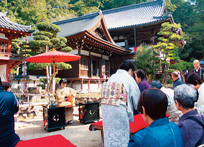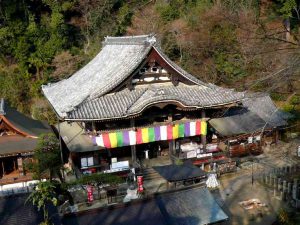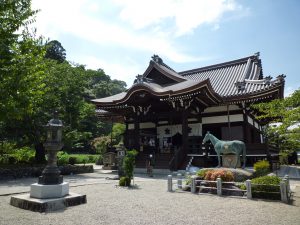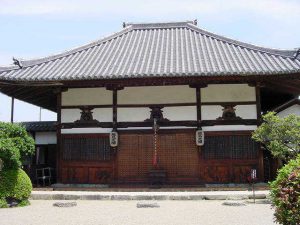Kaisanki Nodate
 An open-air tea ceremony is held at the Oka-dera Temple on the anniversary of the temple foundation in October. The first 1,000 visitors are served matcha tea for free.
An open-air tea ceremony is held at the Oka-dera Temple on the anniversary of the temple foundation in October. The first 1,000 visitors are served matcha tea for free.
 An open-air tea ceremony is held at the Oka-dera Temple on the anniversary of the temple foundation in October. The first 1,000 visitors are served matcha tea for free.
An open-air tea ceremony is held at the Oka-dera Temple on the anniversary of the temple foundation in October. The first 1,000 visitors are served matcha tea for free.
 Its formal name is Ryugai-ji.
Its formal name is Ryugai-ji.
There is a pond called Ryugai-ike which is said to have a dragon sealed within in the grounds.
The principle object of worship is the Cintamani-cakra bodhisattva sedentary statue (Important Cultural Property), which is the largest earthen statue in Japan. In the spring, 3000 rhododendrons color the grounds.
 Said to be the birthplace of Umayadonooji/Prince Shotoku Taishi, this is one of the 7 temples built by him.
Said to be the birthplace of Umayadonooji/Prince Shotoku Taishi, this is one of the 7 temples built by him.
We know that it was built in 680 through fire records. There is also a stone which possesses two faces–one good and one evil.
 Built from the end of the 6th century to the start of the 7th century with the prayer of Soga no Umako, it is Japan’s oldest full-fledged Buddhist Temple.
Built from the end of the 6th century to the start of the 7th century with the prayer of Soga no Umako, it is Japan’s oldest full-fledged Buddhist Temple.
The copper Shakanyorai sedentary statue (Important Cultural Property) is the principle object of worship and is known by the popular name “Asuka Daibutsu”.
